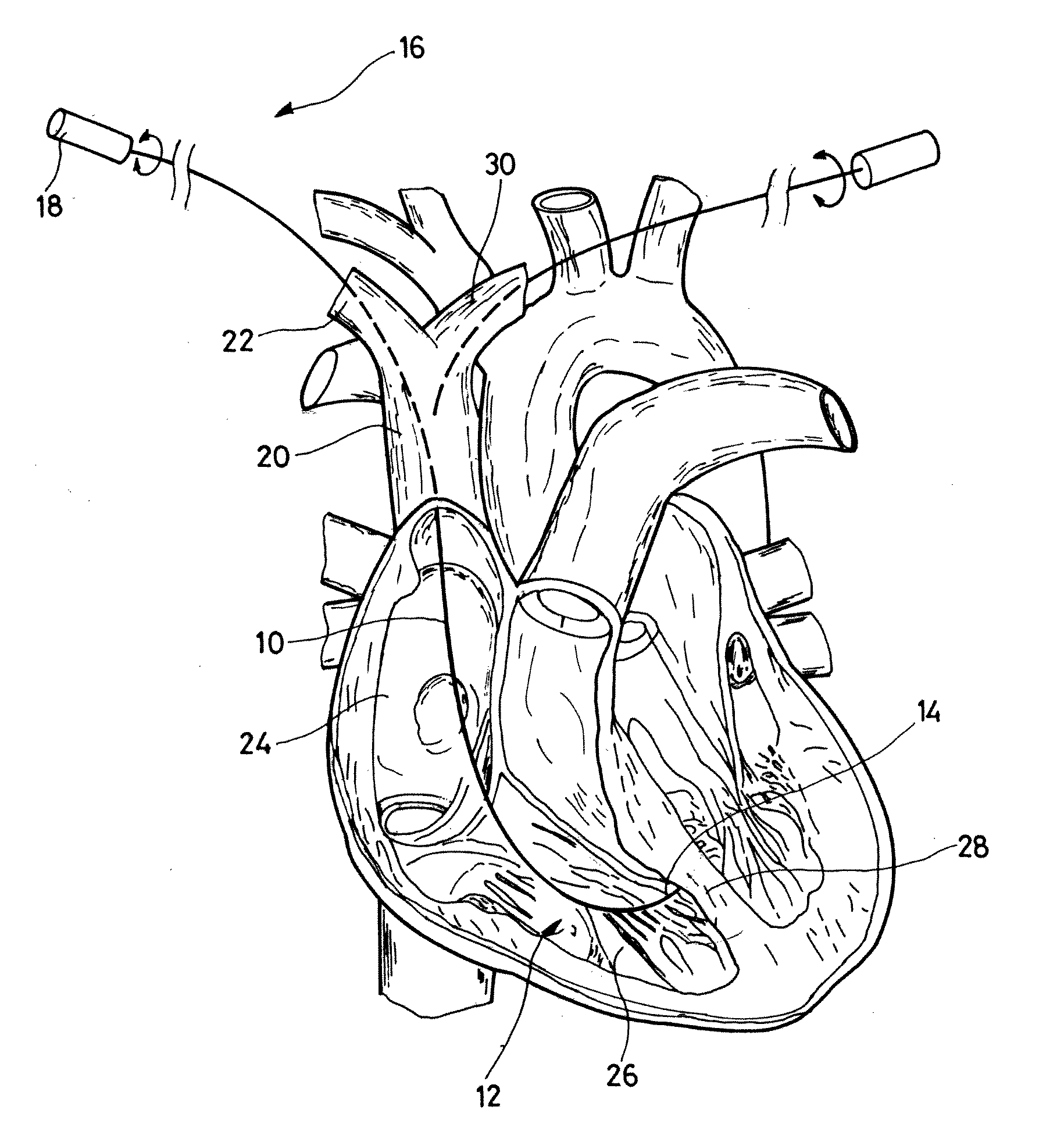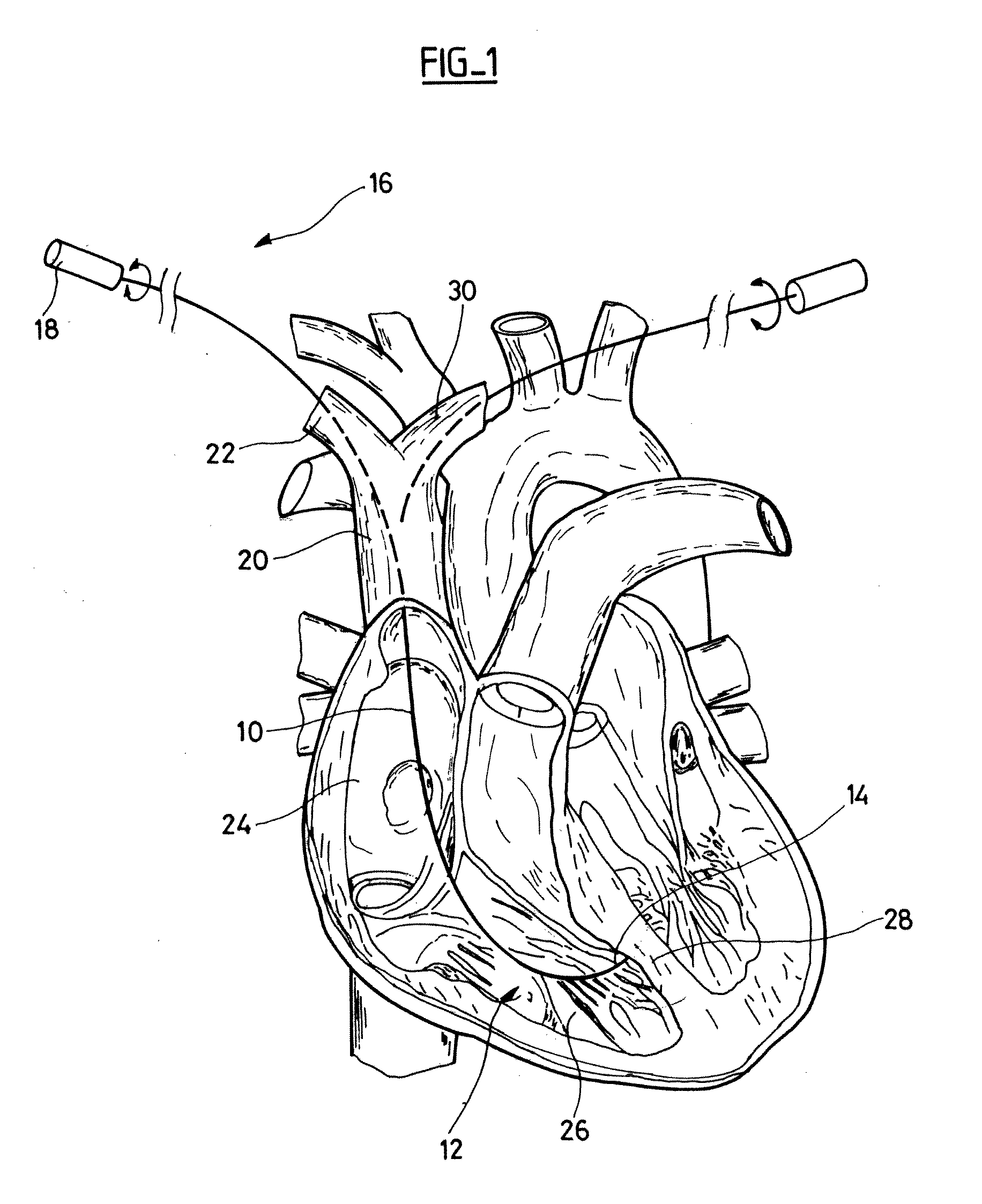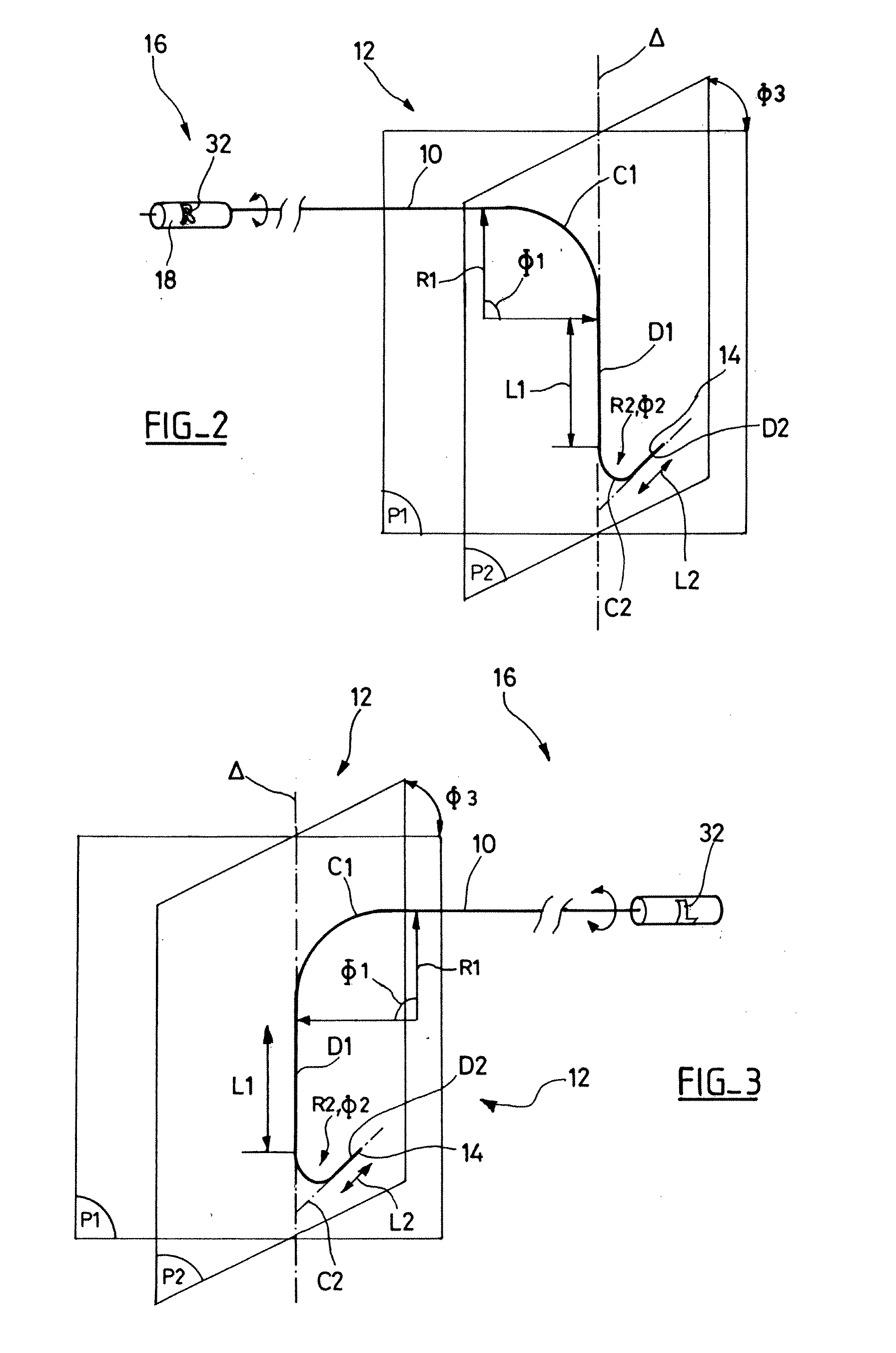Preformed stylet for guiding a lead to contact the septum
a stylet and septum technology, applied in the field of stylets, can solve the problems of reducing the efficiency of torque transmission, and reducing the difficulty of septal lead placement, etc., and achieve the effect of efficient torque transmission
- Summary
- Abstract
- Description
- Claims
- Application Information
AI Technical Summary
Benefits of technology
Problems solved by technology
Method used
Image
Examples
Embodiment Construction
[0034]With reference to FIGS. 1 to 3, reference 10 generally designates a stylet threaded into the lumen of the central hollow shaft of an intracardiac lead so that the latter, which structure is very flexible, replicates the form given by the stylet introduced inside.
[0035]The distal part 12 and the distal end 14 arrives in the right ventricle and corresponds to the lead head, which is intended to be implanted against the interventricular wall or septum (noting that the invention also could be applied to a location against the interatrial septum).
[0036]At the opposite end, proximal portion 16, the stylet 10 is provided with an actuating control handle 18 which allows control by torsion transmission effort of the distal end 12 (14) to guide it, and therefore the lead in which the stylet is threaded into, in the direction of the selected pacing site.
[0037]Stylet 10 is preferably made of a flexible material that is relatively rigid but elastically deformable, such as a stainless steel...
PUM
 Login to View More
Login to View More Abstract
Description
Claims
Application Information
 Login to View More
Login to View More - R&D
- Intellectual Property
- Life Sciences
- Materials
- Tech Scout
- Unparalleled Data Quality
- Higher Quality Content
- 60% Fewer Hallucinations
Browse by: Latest US Patents, China's latest patents, Technical Efficacy Thesaurus, Application Domain, Technology Topic, Popular Technical Reports.
© 2025 PatSnap. All rights reserved.Legal|Privacy policy|Modern Slavery Act Transparency Statement|Sitemap|About US| Contact US: help@patsnap.com



